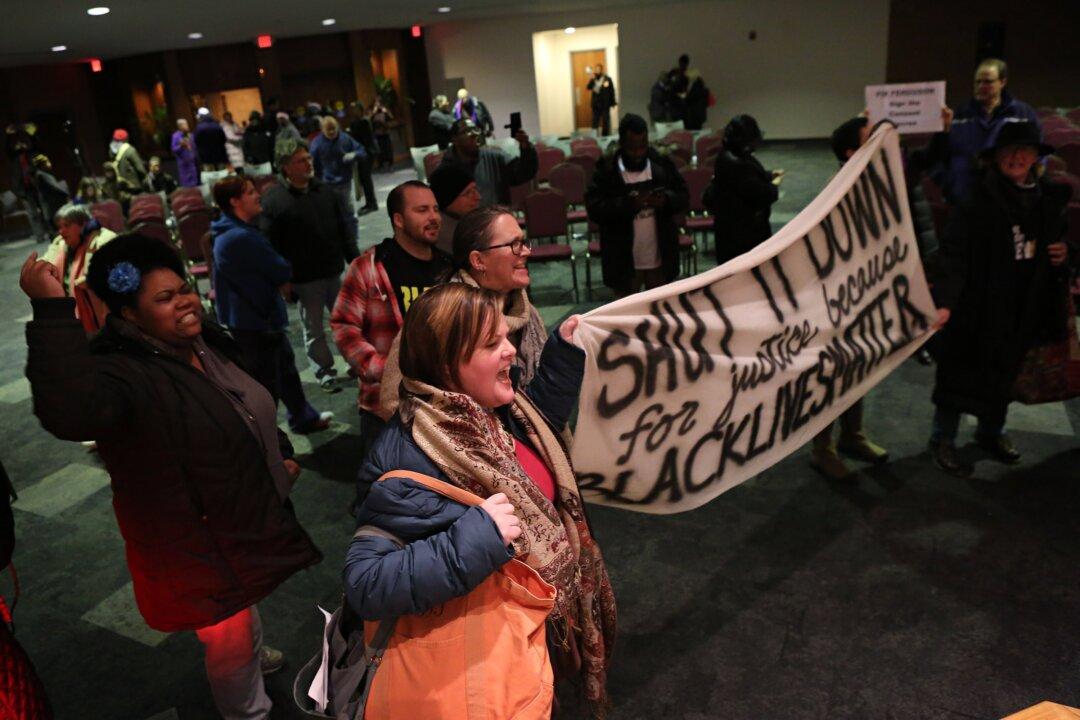FERGUSON, Mo.—A year and a half after a police officer fatally shot an unarmed black 18-year-old in the St. Louis suburb of Ferguson, the U.S. Justice Department has filed a civil rights lawsuit against the city. Here is a timeline of key events that followed the Aug. 9. 2014 shooting of Michael Brown:
AUG. 9, 2014—Michael Brown and a companion, both black, are confronted by an officer as they walk back to Brown’s home from a convenience store. Brown and the officer, who is white, are involved in a scuffle, followed by gunshots. Brown dies at the scene, and his body remains in the street for four hours in the summer heat. Neighbors later lash out at authorities, saying they mistreated the body.
AUG. 10, 2014—After a candlelight vigil, people protesting Brown’s death smash car windows and carry away armloads of looted goods from stores. In the first of several nights of violence, looters are seen making off with bags of food, toilet paper and alcohol. Some protesters stand atop police cars and taunt officers.
AUG. 11, 2014—The FBI opens an investigation into Brown’s death, and two men who said they saw the shooting tell reporters that Brown had his hands raised when the officer approached with his weapon and fired repeatedly. That night, police in riot gear fire tear gas and rubber bullets to try to disperse a crowd.
AUG. 14, 2014—The Missouri State Highway Patrol takes control of security in Ferguson, relieving St. Louis County and local police of their law-enforcement authority following four days of violence. The shift in command comes after images from the protests show many officers equipped with military-style gear, including armored vehicles, body armor and assault rifles. In scores of photographs that circulate online, officers are seen pointing their weapons at demonstrators.
AUG. 15, 2014—Police identify the officer who shot Brown as Darren Wilson, 28. They also release a video purporting to show Brown robbing a convenience store of almost $50 worth of cigars shortly before he was killed, a move that further inflames protesters.
AUG. 16, 2014—Missouri Gov. Jay Nixon declares a state of emergency and imposes a curfew in Ferguson.
AUG. 18, 2014—Nixon calls the National Guard to Ferguson to help restore order and lifts the curfew.






